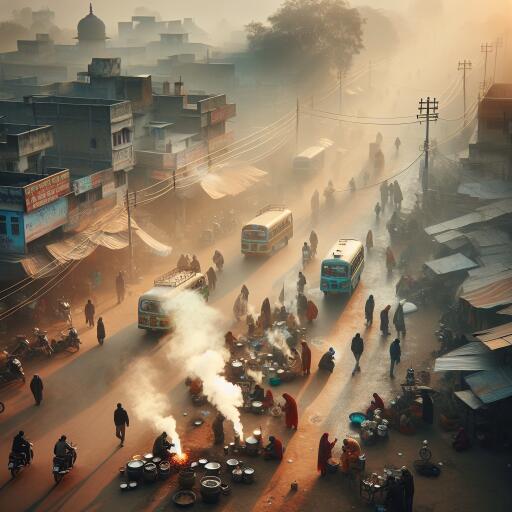
India News | Fog, Chilly Mornings Disrupt Daily Life in North India
On a crisp winter morning, Rajasthan was enveloped in a chill that seeped into daily routines, as temperatures plummeted across the state, challenging residents to adapt to the harsh weather conditions. Jaipur, the capital city, was shrouded in a thick blanket of fog which reduced visibility drastically, while the mercury dropped to a chilly 10.2 degrees Celsius. Jaisalmer faced even colder weather at 9.6 degrees Celsius, with Sriganganagar at a brisk 6.8 degrees, Udaipur at 7, Bikaner at 9.2, and Churu at 7.8 degrees Celsius.
These conditions mirrored those found in Uttar Pradesh, where Agra experienced visibility reduced effectively to zero under a dense fog. In the state’s capital, Lucknow, the temperature was a cold 8 degrees Celsius, with Jhansi recording a temperature of 8.4 degrees Celsius in the early morning hours.
Further north, in Jammu and Kashmir, the coldwave persisted with temperatures dropping below freezing, freezing surfaces such as the iconic Dal Lake. In the morning, Srinagar experienced a temperature of -1.2 degrees Celsius, with Gulmarg slightly higher at 0.8 degrees Celsius, Pahalgam endured -3.8 degrees, Banihal braved 3.6 degrees, and Kupwara recorded -1 degree Celsius.
As defined by the India Meteorological Department (IMD), a cold wave occurs when the minimum temperature of a region falls to 10 degrees Celsius or below for plains, while for hilly areas, it’s 0 degrees or less. This standard was clearly met across several northern regions of India, impacting daily life significantly.
In the national capital, Delhi, temperatures also dipped, reaching a minimum of 9.6 degrees Celsius. A slight fog layer added to the wintry vibe of the city. Moreover, Delhi’s air quality deteriorated further, with the Air Quality Index (AQI) plumbing from ‘poor’ to ‘very poor,’ registering 348 in the early hours. For reference, AQI levels from 301 to 400 are classified as ‘very poor,’ while the spectrum between 401 to 500 is deemed ‘severe.’
With such adverse conditions, the Delhi Urban Shelter Improvement Board (DUSIB) has been proactive in setting up shelters across the city to accommodate those without homes. A network of 235 pagoda tents provides respite from the sharp cold. Night shelters have been established in several key areas around the capital, including around the All India Institute of Medical Sciences (AIIMS), Lodhi Road, and Nizamuddin flyover, offering temporary refuge from the biting cold.
As the fog and chill persist, the northern regions of India continue to brace against the discomforting effects of the weather, drawing public attention to the importance of warm clothing and the need for protective measures against the severe cold and low visibility.
The push to accommodate the vulnerable highlights the ongoing struggle to adapt urban living conditions to ever-changing climatic challenges, emphasizing community resilience and preparedness as key components of urban life during harsh weather conditions.





Leave a Reply